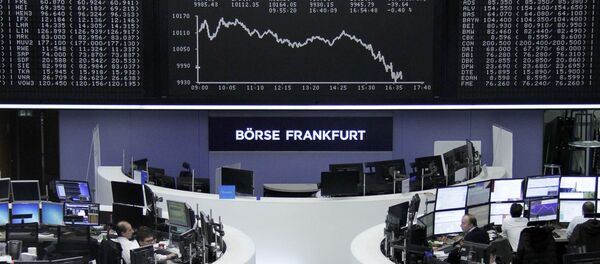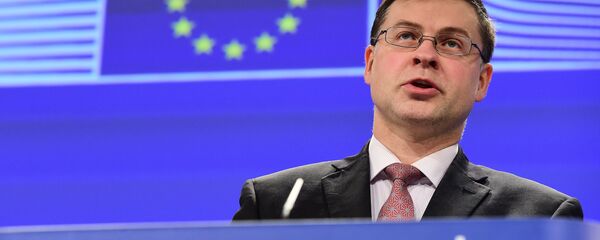Kristian Rouz — On Thursday, the European Central Bank (ECB) enacted a massively expanded monetary stimulus hoping to prop up inflation and boost economic growth in the Eurozone, going deeper into the negative interest rates territory and providing additional money liquidity to banks. The decision, however, immediately failed to impress currency markets, with the euro rising against the odds of easing steps, particularly of that scale, suggesting a further devaluation. Amidst the speculation of the ECB stimulus no longer efficiently supporting inflation and growth, the regulator's reluctance to push for greater government investment in the Eurozone and consolidation of fiscal policies within the bloc, might be an indication the ultra-loose monetary policies are the new long-time normal within the common currency bloc. Subsequent market moves showed the new enhanced stimulus might not work after all.
The Eurozone's commercial bank will thus now be paid to lend money liquidity from the central bank, yet, they are going to be charged for holding the money in reserves, meaning the ECB is coercing banks into boosting their lending to the real economy. Supporting this point, the ECB also announced a new four-year programme, providing banks with bonuses should they expand their lending to the non-financial sector. All these measures are aimed at boosting the overall economic expansion in the common currency area, whilst additional money printing and bond purchases are designed to boost inflation.
"We are optimistic that it will work," Marchel Alexandrovich of the London-based Jefferies International Ltd said. "But there's a consistent struggle in the mind of the markets that we're looking at a new normal of lower growth and lower inflation, and the future isn't going to be like what we were used to before."
Although negative rates were first introduced in mid-2014, the Eurozone's inflation continued to slow thereafter, from roughly 2% to 1.5% in early 2015, despite the EB repeatedly cutting rates and introducing a full-scale quantitative easing. The Eurozone's inflation had picked up to 1.8% in mid-2015, but has been sliding ever since, to just 1.4% as estimated of March 2016.
However, a fiscal stimulus sounds like a utopia in the Eurozone, where several heavily indebted members, including France, Italy, and Spain, are near their budget deficit limits, as provided by the EU accords. Lack of unity on fiscal policies among the EU member states is a major issue for the common currency area, leaving monetary policy the only viable tool of economic adjustment.
Yet, the impact of monetary policy measures has been diminishing steadily throughout the past two years as indicated by inflation dynamics. In the absence of other leverage, the ECB's use of the same methods caused a surprise reaction in the markets: investors continued buying into the euro despite the fact that EB-announced money-printing is a clear signal the common currency would weaken further. The euro has been rising after Draghi's announcements.
"(Draghi)'s thrown everything he has at the market today," Gordon Shannon of the London-based TwentyFour Asset Management said. "It should be very supportive and get him ahead of the curve. But it'll be very worrying if we don't see much of a market reaction. He has no moves left."
The euro has gained roughly 3% against the dollar in 2016 thus far. After the ECB news, the common currency was swinging between a 1.6% drop and 2% for some 90 minutes, later rising and posting a daily gain of 1.6% at $1.1177. Against the yen, the euro rose 1.5% to 126.51 on the day the enhanced stimulus was announced.
Whilst the anticipated effect of the new stimulus might be very limited, the ECB measures are a bad sign for those owning savings accounts and for the entire Eurozone's insurance industry: negative rates will make them pay or liquidate assets. Besides, the ultra-loose monetary policies are not a guarantee the money will flow into the real economy. More likely, the liquidity will end up in higher-returning financial markets, bearing risks of them overheating and bubbling eventually.





